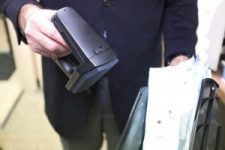
Canada’s Great Lakes Orthopedic Hospital uses Xerafy medical label to manage surgical instruments
[ad_1]
To ensure that the strict management of surgical instruments in hospitals is closely related to the safety of patients, which is also an issue that all medical institutions are very concerned about. Retired nurse Carol Schmucker recalled that hospitals often experienced accidents in which surgical instruments were lost, misplaced, or wrapped in sheets, thrown away, or even left in the patient’s body. Although surgical procedures require nurses to count instruments before and after surgery, human error is inevitable.

Faced with these urgent problems, Schmucker decided to adopt an advanced system to manage surgical instruments to ensure the safety of patients. The hospital chose the Surgical Safety System (Surgical Safety System) developed by Surgical Safety Scanner, and installed Xerafy RFID medical special tags on each surgical instrument. These patented tags are very small and small enough to be affixed to surgery. The equipment does not affect the doctor’s use. This surgical instrument tracking technology is different from the barcodes or other types of RFID tags used in the past. The tags can withstand the medical sterilization environment. Whether it is high temperature and high pressure steam sterilization or chemical cleaning, the tags installed on the equipment are not affected in the slightest. This system is equipped with an easy-to-operate handheld label reader, which is convenient for group reading or single reading of each device. The staff can scan and clean the labels in the blue, and it only takes a few seconds to know the number of devices in the basket to ensure that Every occasion where the device is used is properly controlled. Through the automated system, the inventory of surgical instruments saves a lot of time, improves the rate of surgical turnover, and also improves the efficiency of the use of surgical instruments in hospitals, and reduces the rate of instrument loss.
“Put a label on a surgical instrument and you will not find it. By scanning the label, you can also view the instrument usage record. Even a new employee can visually see various information about the instrument without having to look at the list.” Schmucker said.
Podiatrist Jeff Szczepanski is the owner of the Foot and Ankle Specialty Hospital. According to him, this surgical instrument management system has been used by the hospital for several months and the effect is very good. The new technology has helped him save the cost of instrument replacement and improve medical services. quality.
The management of medical equipment is clearly stipulated in the laws and regulations of the entire medical industry. For example, in order to avoid medical accidents, JCAHO has developed a general protocol to avoid inappropriate operations and wrong demonstrations in the surgical process. This agreement also provides for surgery. A standard list of equipment inventory and kits. The managers and nurses of the hospital hope to be able to use RFID systems in all consulting rooms, operating rooms, and disinfection supply rooms, which are responsible for the patients.
[ad_2]



